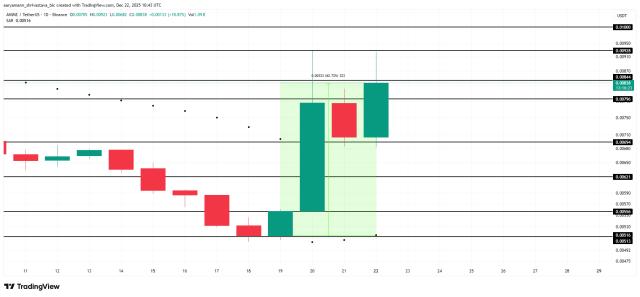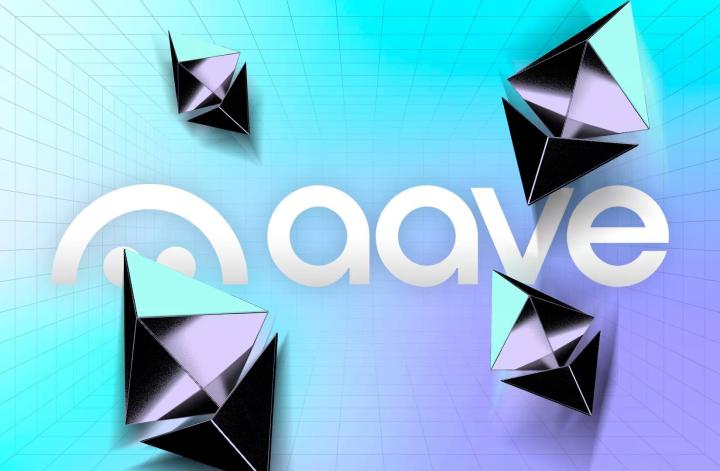Author: Route 2 FI
Compiled by: TechFlow
Good morning, friends.
The cryptocurrency market is undergoing a profound transformation, and we must adjust our strategies and tactics, as the methods that worked in the past are no longer applicable.
The traditional "buy and hold (HODL)" strategy is gradually losing its effectiveness. With increased market volatility and the emergence of new projects, the belief in long-term holding has become more fragile.
Nowadays, the survival law of the market is flexible trading, constantly adjusting positions, and seeking opportunities in a decentralized and highly uncertain environment.
Whether you can successfully adapt to this new situation will determine whether you survive or be eliminated by the market.
Let's delve deeper and see if there is still a glimmer of hope in such a market.

Altcoin Casino: How to Survive in the Fragmented Cryptocurrency Market
For those who have entered the cryptocurrency market in the past year or a year and a half, this market is undergoing a profound transformation.
The "shortcut" to profitability through centralized exchanges, which was once easy, has now become increasingly complex. The market's operation is more like a casino than a traditional trading market, requiring investors to have unprecedented flexibility and acuity.
The traditional "buy and hold" strategy, although effective in the early cycles, is no longer applicable. The holding period has become shorter and shorter, from a few weeks to even a few days (remember those old players telling us to just buy Altcoins at a low price and wait for the high point to sell?).
Behind this change is the constant emergence of new coins and new projects. Each new project is competing for market attention and capital, constantly challenging the position of existing projects.
Even events traditionally seen as positive can have unexpected consequences. For example, Trump's launch of a high-profile MEME may attract a large number of new users to the cryptocurrency market, but it could also lead to a sharp drop in the value of many Altcoins. The beneficiaries are usually limited to BTC, Solana (SOL), and related MEME coins.
Many investors have learned a painful lesson - if their portfolio is not heavily weighted in BTC and SOL, they may suffer huge losses.
A similar situation occurred with the release of Berachain, which attracted a lot of attention and capital, but had an impact on the Abstract ecosystem.
In such a dynamic and unpredictable market, the wisest approach is to accept that volatility is the norm of the market, and recognize that as new coins, new chains, and new projects continue to emerge, this volatility may further intensify.
Therefore, many investors are adjusting their strategies, increasing their holdings of BTC and stablecoins, while significantly reducing their long-term Altcoin positions. The market focus has also shifted from "long-term investment" in Altcoins to tactical "short-term trading" operations.
The goal is to avoid becoming the "last believer" of those failed projects, watching their value go to zero.
At the stage where the current cycle is approaching its end, the risk-reward ratio of buying coins other than BTC based on long-term investment logic may not be ideal. Although Altcoins may be near the bottom, the likelihood of most coins, NFTs, or ecosystems hitting new highs simultaneously is decreasing.
The constant launch of new coins dilutes the market's attention and capital, making it increasingly difficult for existing projects to regain prominence.

The current cryptocurrency cycle is filled with unprecedented challenges, as the market is generally permeated with a stronger sense of uncertainty than ever before. This uncertainty is mainly due to the fact that even the popular Altcoins, after experiencing significant declines, do not have enough confidence to confirm that they will rebound.
Reviewing the cycles of 2017 and 2021, investors usually had confidence in buying the dips of Altcoins, as long as their market capitalization (mcap) was not too low (usually below $100 million). The prevailing view at the time was that these coins would recover their value within the cycle, and at least not be completely dormant in this round of the cycle. The coins that gained early market attention often maintained their momentum and market position until the end of the cycle.
However, this cycle is completely different (yes, indeed). The market is flooded with various narratives and sub-narratives, each vying for the attention of investors, but this attention is often fleeting. Investors are now more cautious about "buying the dips" because the entire narrative of a coin can collapse at any time, rendering the investment worthless.

Unlike the past cycles centered on a single narrative, the current market presents multiple narrative-driven mini-cycles, each with its own peaks and troughs. BTC and Solana (SOL) are generally considered relatively safe choices that may eventually recover their value, but for investors seeking high-multiple growth, their potential returns may not be attractive (after all, BTC has already risen 6x from the bottom, and SOL has risen 20x). The question is whether to allocate funds to areas such as AI cryptocurrencies. Although these areas have recently received a lot of attention, they have already retreated significantly from their historical highs, and there are no clear signs that they can return to their peaks.
The high fragmentation of the market makes it difficult for investors to accurately identify and seize emerging trends. Cryptocurrencies have always been a speculative market since their inception, although past cycles have tried to legitimize it by emphasizing "peer-reviewed blockchain technology," "solid fundamentals," and "real-world applications." However, this cycle seems to have abandoned this pretense and embraced a more realistic view: everything depends on how to attract and maintain the market's attention. This trend has led to a significant shortening of the attention cycle of investors in the market. The "bull market cycle" that used to last one to two years is now compressed into just a few months, weeks, or even days.
The current market appears to be experiencing a MEME super-cycle (or has this cycle already ended?). However, even the most popular MEME coins have experienced significant declines from their peaks, making the rationale for investing in them more questionable.

In the current cryptocurrency market, investors face a higher "bag-holding risk" than ever before. In past cycles, when coins experienced similar declines, investors would typically view it as an opportunity to buy the dips, as the likelihood of these coins eventually rebounding was almost undoubtable. However, the current question is whether these coins can regain their former market attention. The market is now more inclined to support the leading coins, rather than the underperforming projects. Even if certain projects have strong fundamentals, if they lack market hype, they are unlikely to gain favor.
Although MEME coins and AI projects have performed well in the current market, investors remain cautious about these trends, as the shift in market attention is often rapid and unpredictable. This general uncertainty stems from the overwhelming choices faced by investors. Thousands of coins and projects in the cryptocurrency market are competing for attention, making it difficult for investors to determine which projects have genuine potential and which are just fleeting. The fragmentation and brevity of market attention make it challenging to form a long-term market consensus on any given project. A thought-provoking question is whether this phenomenon has become the new normal for the cryptocurrency market, or if it is just a temporary condition in the current market environment.

Typically, each market cycle goes through an initial chaotic and distracted stage, and then gradually stabilizes as clear winners emerge. However, it is also possible that the market has undergone fundamental changes, and investors' attention spans have become increasingly short, making it difficult for a single narrative to dominate for an extended period.
At the same time, macroeconomic factors are also profoundly impacting the current market landscape. In the past, loose monetary policy made investing relatively simple, as ample liquidity fueled speculative bubbles. However, in the current high-interest rate and tight liquidity environment, the market has become more severe.
Investors' confidence in 'buy the dips' has weakened, which may reflect a broader economic reality. In the face of uncertain economic prospects, investors' risk appetite has declined significantly. There is also an increasing debate about the traditional four-year cycle, with some predicting that the cycle may be extended. However, based on the current market performance, the four-year cycle seems to still exist, but with some notable changes compared to the past. For example, the current cycle's market performance has been relatively sluggish: Bitcoin has only reached about 1.5 times the previous historical high, while Ethereum has not even broken a new historical high. This market performance is largely driven by specific events, such as Michael Saylor's support for Bitcoin and the launch of Bitcoin ETFs, which have attracted the attention of institutional investors. However, apart from the Bitcoin ecosystem, the inflow of funds into other areas has been very weak, and speculative capital has flowed more into the short-lived Meme coins.
In the current market, the widespread speculative capital has almost disappeared, and the market lacks sufficient momentum to break through the overall new highs. Instead, the capital is more circulating within the existing cryptocurrencies, presenting a 'net zero' state. Due to the lack of major liquidity providers, these scattered hot spots are unable to drive the overall capital flow, and it is also difficult to attract a large influx of new investors' funds.
The performance of this round of the cryptocurrency market cycle is significantly different from the previous bull markets. This has led to a profound reflection on the nature of the cryptocurrency market cycle. The current market lacks a widespread speculative frenzy, with returns concentrated on Bitcoin, and capital circulating more within the cryptocurrency ecosystem. These phenomena indicate that the market is trying to adapt to a completely new operating mode. The key factors that have driven the bull market in the past, such as loose monetary policy and the enthusiasm of retail investors, no longer seem to be as prominent in the current environment. And the long-awaited 'alt season', where almost all Altcoins experience rapid price increases, has not yet truly arrived.

Since the launch of the Bitcoin ETF, the gap between Bitcoin's market capitalization and the total market capitalization of other cryptocurrencies (the BTC-TOTAL2 indicator) has continued to widen. During the previous alt seasons, a large amount of speculative capital flowed into the market, and almost all cryptocurrencies would rise indiscriminately. However, Bitcoin now seems to have become an independent entity, with its price movements more influenced by ETFs, Microstrategy's strategic layout, macroeconomic environment, and political factors. In comparison, the Altcoin market is more like a high-risk 'casino'. Only when the market has a large net inflow of capital and you can choose the right investment direction, there is a chance to get a return.
However, in this casino, every winner is accompanied by a loser. Compared to the previous cycles, the 2025 cryptocurrency market appears more complex and difficult to grasp. There are too many 'investment tracks' (i.e., different Altcoins and sub-sectors) in the market, with new tokens constantly emerging, competing for investors' attention and capital. The abundance of choices makes it difficult for investors to quickly identify truly promising projects, and also increases the risk of investing in failed projects. In such a rapidly changing market, success requires exceptional insight, keen market awareness, and flexible responsiveness.
Nevertheless, there are still some who are confident in the future alt season, and I sincerely hope that their predictions will come true.








